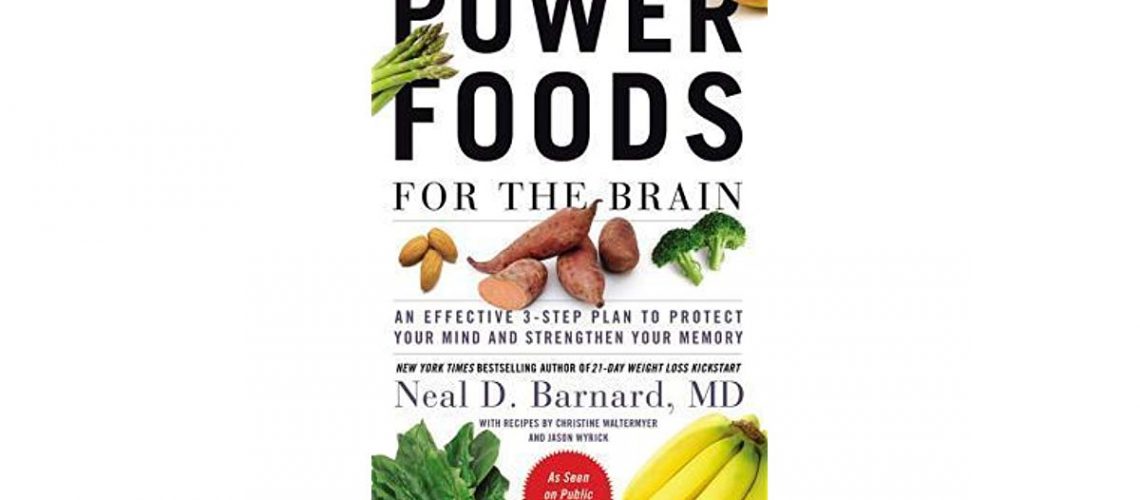An Effective 3-Step Plan to Protect Your Mind and Strengthen Your Memory
Dr Neal Barnard reveals the effect of certain foods on the brain and memory. He presents the research that illustrates how simply eating more of certain foods such as vegetables, nuts and anything with colour can greatly improve an individual’s memory and brain health.
TED Talk by Dr. Neal Barnard
Key Takeaways
If you could make a list of all the things that could ever happen to you, the very last thing on your list, at the very bottom of the list, the thing you want the least is Alzheimer’s disease, because when you lose your memory, you lose everything. You lose everyone who ever mattered to you.
Alzheimer’s disease affects about half of Americans by their mid 80s. There’s a gene – it’s called the APOE-[epsilon]4 allele. If you have this gene from one parent, your risk is tripled; if you got it from both parents, your risk is 10 to 15 times higher than it was before.
1. Reduce Unhealthy Fats
- If you are avoiding the bad, unhealthy fats, even if you have the gene, your risk of developing memory problems was cut by 80%. And this is the most important point: genes are not destiny.
Trans fats from foods like donuts, pastries; and saturated fats like from Bacon, meat, cheese/dairy.
2. Reduce metals like iron, and copper.
Iron and copper oxidize in your body, and as they do that, they cause the production of what are called free radicals. Free radicals are molecules that are swimming around in your bloodstream, and they get into the brain, and they act like sparks that seam through the connections between one cell and the next.
- So, how is this happening? Where am I getting all this iron? Where am I getting all this copper? How can that be? How many people have a cast iron pan? If that’s your once a month pan, I’m going to say, “Who cares?” But if it’s every single day, you’re getting the iron into your food, and it’s more iron than your body needs.
- Or copper pipes. Who has copper pipes? That water sits in the copper pipes all night long, and in the morning it goes into the coffee maker, and you’re drinking that copper, you get more than you need, and it starts producing these free radicals that go to the brain.
- If you’re a meat eater, of especially liver, there’s iron and copper in those foods too.
And we used to think, “Isn’t that great?” until we realized iron is a double-edged sword. You need a little bit, but if you have too much, it becomes toxic.
3. Take Vitamin E to eliminate free radicals from brain
Vitamin manufacturers put in vitamin A, and the B vitamins, and vitamin C, and vitamin D. And then they throw in iron and copper, thinking, “Well, you need these,” not recognizing you’re already getting enough in foods, and if they add it to your supplement, you are getting too much.
What I’m saying is aside from the fact that the saturated fat and the trans fats will increase our risk, these metals will, too, and they are causing sparks to form in the brain, free radicals to form that seam through the connections. And if that’s the case, then I need a fire extinguisher. And we have one, and it’s called vitamin E.
- Vitamin E is in spinach, mangoes, nuts and seeds.
- It is an antioxidant: it knocks out free radicals.
- People getting eight milligrams a day of vitamin E cut their risk of Alzheimer’s by about half compared to people getting less than that.
- Don’t just buy a bottle of vitamin E pills. Nature has eight forms of vitamin E. It’s built into nuts and into seeds, but if I put it into my supplement pill, I can legally call it vitamin E if it has only one form.
- If you’re eating too much of one form of vitamin E, it reduces your absorption of all the others.
- You want to get it from food; that’s the form that nature has designed for us, and that’s the form that we’ve evolved with.
4. Eat colorful fruits and veggies daily
All right, researchers at the University of Cincinnati went one step further. Not just saturated fat, not just trans fats, not just vitamin E, but they said, “What about color?”
- Look at blueberries and grapes: that color that they have is dramatic. And the colors of blueberries aren’t just there to make them pretty, those are called anthocyanins.
- That purple color, those anthocyanin happen to be powerful antioxidants, just like vitamin E, but they’re the grape form, and if you consume them, they go into your bloodstream.
- It doesn’t have to be grapes, it could be anything that has that color. Like blueberries.
The answer is color. If you look at the colorful foods, there’s an important lesson there for us. You walk into the grocery store, and from a hundred feet away, looking at the produce department, you can recognize beta-carotene, lycopene, anthocyanin.
Your retina can detect them because that’s the orange color of a carrot, or the red color of a tomato, or the purple color of a grape. And the brain also tells you they’re pretty, they’re attractive, you can recognize antioxidants, you’re drawn to them.
- Fruits, and grains, and vegetables.
- The protein group could be meat, but it could be beans, or tofu, or nuts, or anything that’s high in protein, it doesn’t have to be meat.
5. Exercise
One more step. It’s not all food, there’s something to say about exercise.
- At the University of Illinois, researchers brought in a large group of adults, 120 of them, and they said, a brisk walk, three times a week.
- After a year, everyone went into the laboratory for a brain scan. They measured the hippocampus which is at the center of the brain, and it’s the seat of memory: it decides what should be let through into memory, and what should not be let through.
- It turned out that this organ, which is gradually shrinking in older adults, suddenly, stopped shrinking.
- The exercisers found that their hippocampus was a little bit bigger, and a little bit bigger, and a little bit bigger, it was as if time was going backwards: It reversed brain shrinkage, and on memory tests, they did substantially better.
- Do a ten-minute walk 3x/week. And then, next week, do a 15-minute walk, and the week after that, 20.
- Add five minutes a week until you get to 40 minutes.
- 40 minutes, three times a week is all you need to improve memory and reverse brain shrinkage.


